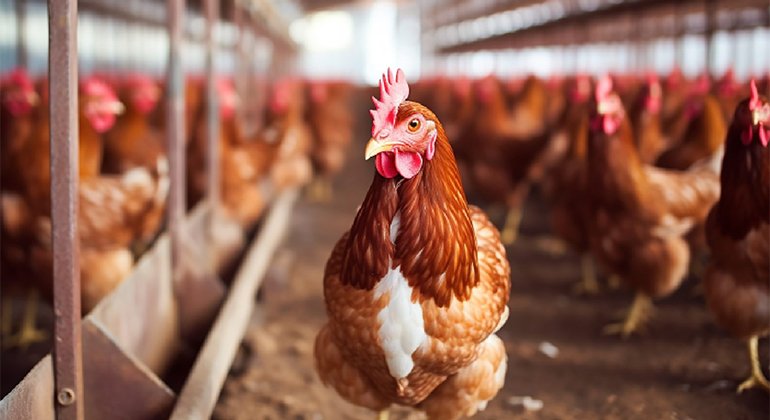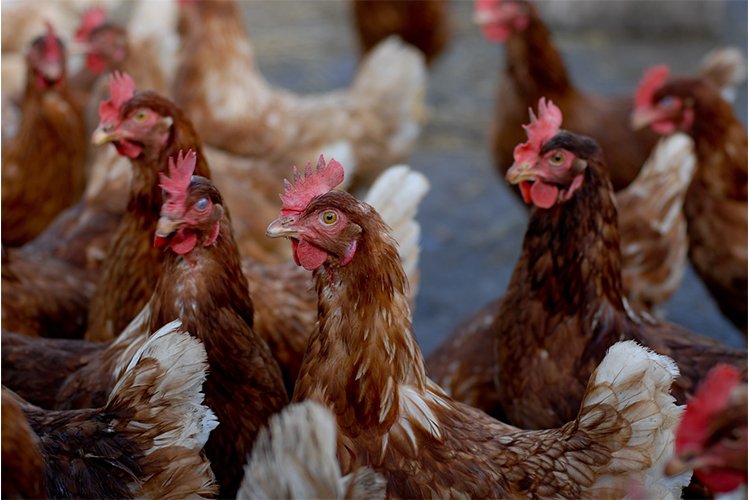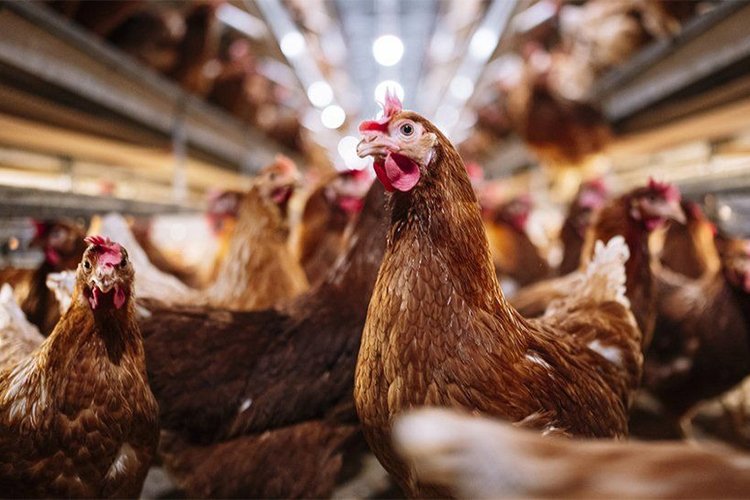- Beauty & Skincare
- Fashion
- Food And Drinks
- Health & Care
- Home & Garden
- LifestyleExplore stories and advice on living your best life. From personal growth to entertainment, dive into the latest in lifestyle trends and inspiration.
- Travel
- Beauty & Skincare
- Fashion
- Food And Drinks
- Health & Care
- Home & Garden
- LifestyleExplore stories and advice on living your best life. From personal growth to entertainment, dive into the latest in lifestyle trends and inspiration.
- Travel
Now Reading: A Primer on Bird Flu: What to Know and Do
-
01
A Primer on Bird Flu: What to Know and Do
- Beauty & Skincare//
- Fashion//
- Food And Drinks//
- Health & Care//
- Home & Garden//
- Lifestyle//Explore stories and advice on living your best life. From personal growth to entertainment, dive into the latest in lifestyle trends and inspiration.
- Travel//
- Home
- Health & Care
- A Primer on Bird Flu: What to Know and Do
A Primer on Bird Flu: What to Know and Do
SahilHealth & Care1 year ago24 Views

A strain of bird flu that first circulated in 2020 is evolving around the world and locally in the United States. If you’re wondering what that means, it can be helpful to understand the basics—what bird flu is, how it spreads, whether food is safe, and prevention tips. More information will come as scientists learn more, so stay tuned.
Add Your Heading Text Here
Bird flu, or avian influenza, is a naturally occurring disease. Just as certain flu viruses spread among people, type A flu viruses often spread among wild birds. The strain of the virus currently circulating is H5N1, named for two proteins on its surface.
Bird flu infections are highly contagious. The infection often spreads first among wild waterfowl, such as ducks, geese, and gulls, and among wading birds, such as plovers and sandpipers. The viruses are carried in their intestines and respiratory tract and are excreted in saliva, mucus and feces. Wild birds can easily infect poultry such as chickens, turkeys and ducks.
Some species of birds, including ducks, can carry and spread infections without appearing sick. Poultry are more likely to get sick and may die from bird flu. However, not all bird flu viruses are equally harmful:

Low pathogenic avian influenza (LPAI) may cause no signs of illness in poultry or only mild signs of illness such as fewer eggs or ruffled feathers.
Highly pathogenic avian influenza (HPAI) causes more severe signs of illness and high death rates in infected poultry. The current H5N1 virus is considered HPAI.
2. Can humans get bird flu?
Yes, although this does not usually happen.
When flu viruses mutate, they can potentially be transmitted from their original hosts—in this case, birds—to humans and other animals. As of early April 2024, only two human cases of avian influenza have been reported in the United States since 2022. Another case was reported in May. More recent avian influenza case numbers continue to be reported by the CDC, which offers weekly snapshots of flu in the United States.
The virus can enter the body through the eyes, nose, or mouth. For example, a person may inhale airborne virus particles (droplets, tiny aerosolized particles, or possibly dust). Or they may touch a surface contaminated with the virus and then touch their eyes or nose. Avian influenza in humans typically causes symptoms similar to seasonal flu, such as fever, runny nose, and body aches.
3. What animals are affected by avian influenza?
A surprisingly long list of animals affected by the current H5NI bird flu includes:
Wild birds, chickens, ducks, geese and other domestic and farmed poultry in 48 states and more than 500 countries
Livestock such as dairy cows in nine states as of this writing and other farm animals
Marine animals such as seals, sea lions and even dolphins
Wild animals such as foxes, skunks and raccoons and some domestic animals such as farm cats.
4. Why are experts concerned about this bird flu outbreak?
It may seem strange that there has been so much concern and coverage about bird flu recently. After all, bird flu has been around for many years. We have long known that it sometimes infects animal species other than birds, including humans.
But the current outbreak is unique and concerning for several reasons:
Rapid, widespread spread. The virus has been found throughout the United States, Europe, the Middle East, Southeast Asia, several countries in sub-Saharan Africa, and even Antarctica.

Many species have been infected. Previously uninfected species have been affected, including animals in our food supply.
Economic impact. If large numbers of cattle, dairy cows, and chickens have to be sickened or killed to contain outbreaks, it could have a significant economic impact on farmers, farms, and the economies of affected countries. It could also mean higher prices at the supermarket.
Risk of contagiousness. Although only two human infections have been reported in the United States in recent years—both in people who work with animals—the more people exposed to bird flu, the greater the chance that the virus will develop mutations that allow it to be transmitted more easily to humans.
Possibility of fatalities. Severe strains of bird flu have caused H5N1 infections in nearly 900 people in 23 countries since 2003. More than half of those reported cases have been fatal. Remember, the math is not that simple. It is likely that there were many more cases of bird flu in humans, but people with few or no symptoms or those who were not tested were not counted, so the lethality is probably overestimated.
New mutations. It is rare, but possible: If this H5N1 bird flu develops mutations that allow efficient human-to-human transmission, bird flu could become the next human pandemic.
5. Are milk, beef, chicken, and the rest of our food supply safe?
Health officials stress that the food supply is safe.
But since the discovery that this outbreak first spread from birds to dairy cows, concern has understandably been high. Even more alarming? One study found fragments of bird flu DNA—which is not the same as live viruses—in 20% of commercially available milk in the U.S.
So far, there is no evidence that bird flu in pasteurized milk, beef, or other common foods can cause illness in humans. Even if live bird flu viruses did get into the milk supply, studies show that routine pasteurization would kill them. Initial tests have not found the virus in ground beef.
Of course, if you’re particularly concerned, you can avoid foods and drinks that come from animals that have had bird flu. You could, for example, switch to oat milk or almond milk, although there is currently no compelling scientific justification for doing so.
6. What if you have pets or work with animals?
Bird flu is rarely transmitted to pets. While that’s good news, your pets could come into contact with animals infected with bird flu, such as by eating or playing with a dead bird. So it’s safest to limit your pet’s opportunities to come into contact with potentially infected animals.
If you work with or hunt animals, especially birds or livestock, the Centers for Disease Control and Prevention (CDC) recommends precautions to minimize your exposure to bird flu.
7. What else can you do to stay safe?
The CDC recommends that everyone take steps to avoid contracting bird flu, including:
Avoid contact with sick or dead animals and keep your pets away from them.
Avoid animal feces that may be contaminated by birds or bird droppings, as is common on a farm.

Do not prepare or eat raw or undercooked foods.
Do not drink raw (unpasteurized) milk or eat raw milk cheese or raw or undercooked foods from animals suspected of having avian influenza infection.
Wear personal protective equipment (PPE) such as goggles, gloves, and an N95 face mask when working around sick or dead animals or their feces.
Currently, available evidence does not support more drastic preventive measures such as switching to a purely plant-based diet.
8. Is there any good news about avian influenza?
For all the troubling news about avian influenza, this latest outbreak may not pose a major threat to human health. Virus strains may mutate and spread less efficiently or become less deadly. Efforts are underway to limit the spread of avian influenza to humans. These include removing sick or exposed animals from the food supply and increasing testing of dairy cows before transport across state lines.
And there’s more encouraging news:
Some birds appear to be developing immunity to the virus. This could reduce the likelihood of further spread between birds and other animals.
Developing a vaccine to protect cattle from bird flu may be possible (though it’s unclear whether this approach will be successful).
If it does spread to humans, genetic testing suggests that available antiviral drugs could help treat people. So far, no human-to-human transmission has been detected. That makes H5N1 bird flu less likely to become the next pandemic.
And if human bird flu infections do indeed spike, researchers are working on bird flu vaccines for people using virus strains that closely match those causing the current outbreak.
9. How worried should you be about bird flu?
While there’s much we don’t know, this much seems certain: Bird flu will continue to mutate, posing challenges for farmers and health professionals to stay one step ahead of it. So far, health experts believe that bird flu poses little health risk to the general public.
So it is not time to panic about bird flu. But it is a good idea to take common sense steps to prevent infection and stay up to date with relevant news on theto keep you updated.

























